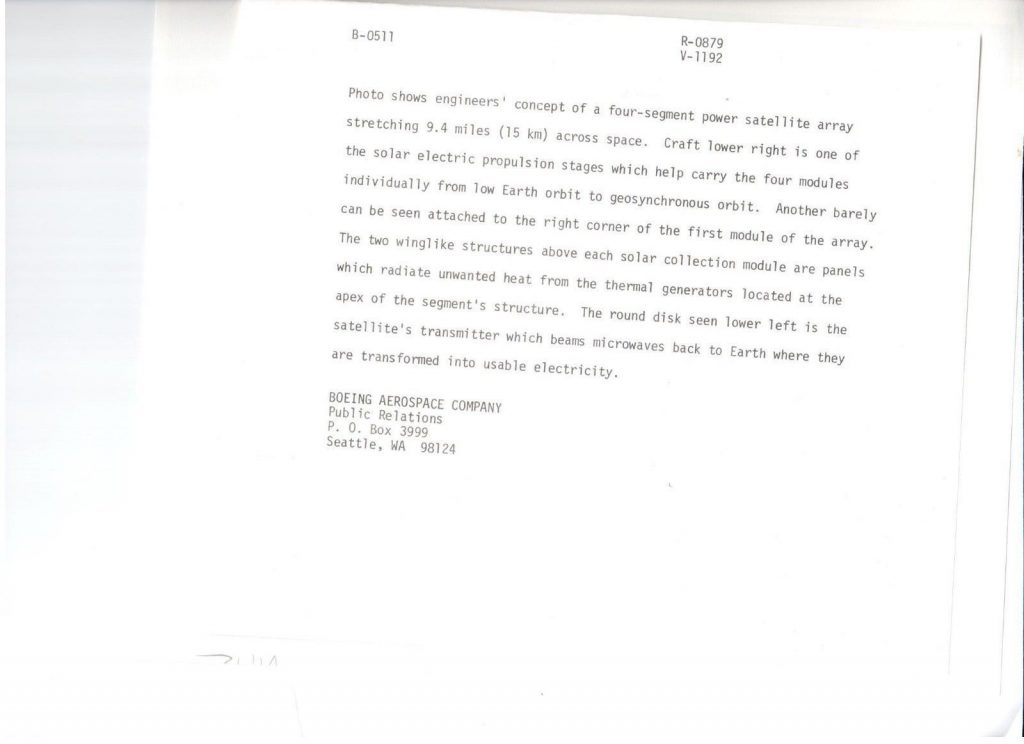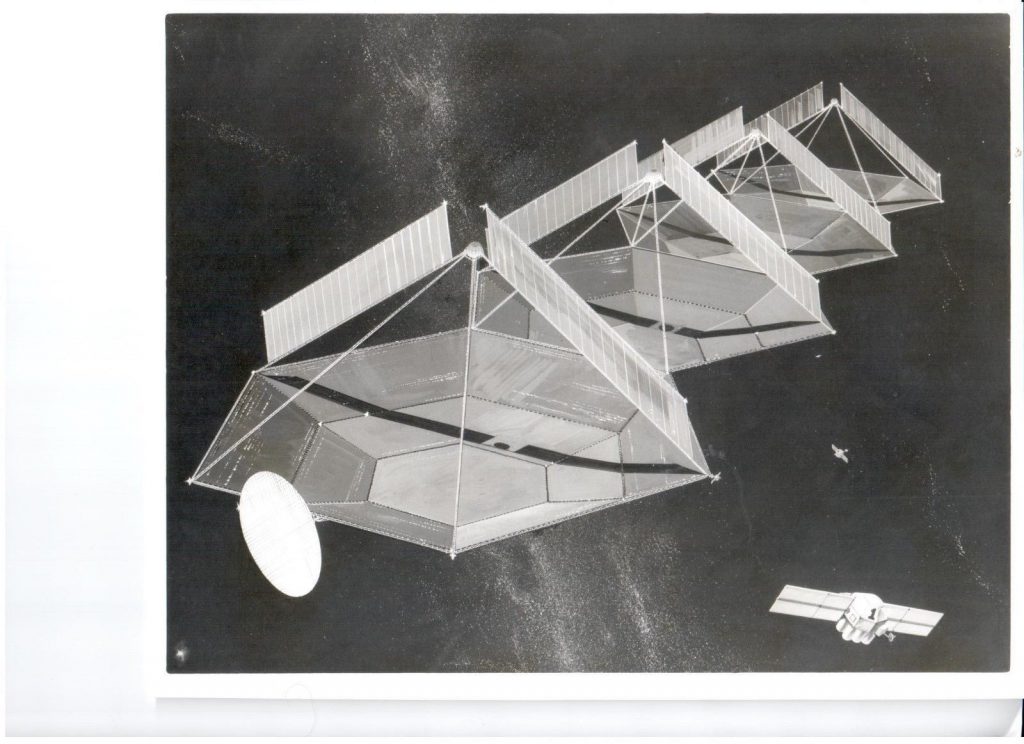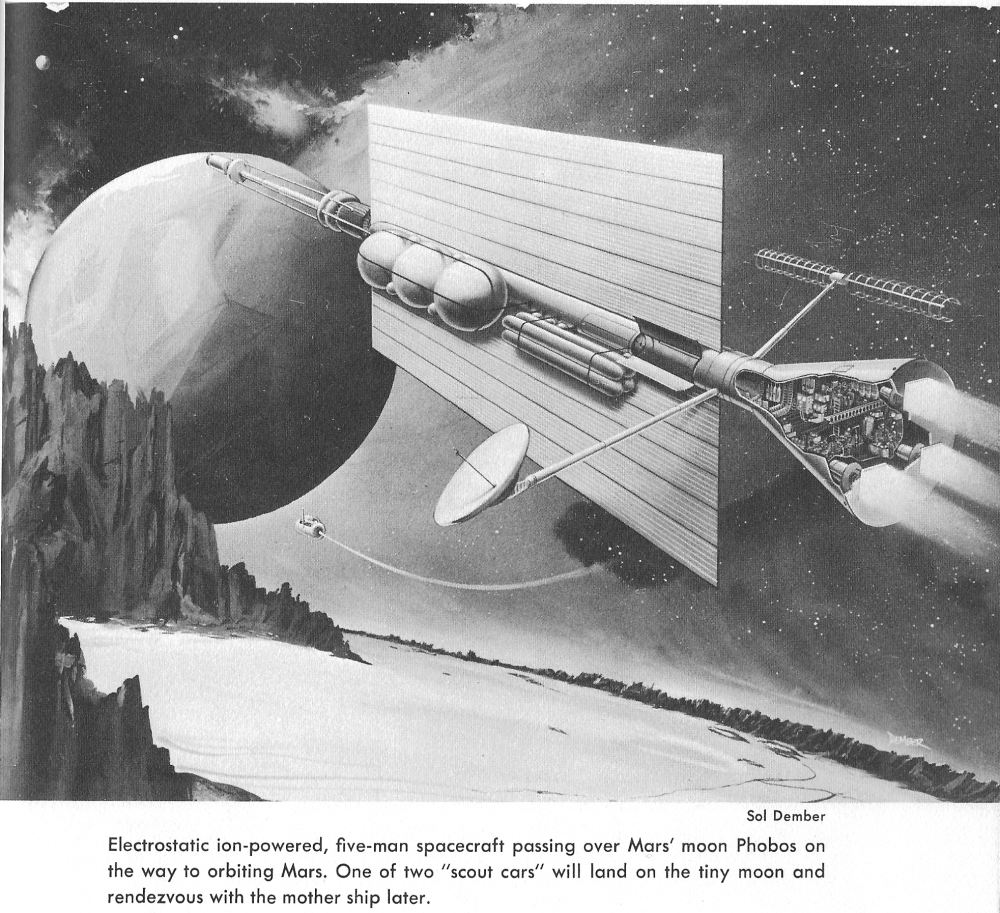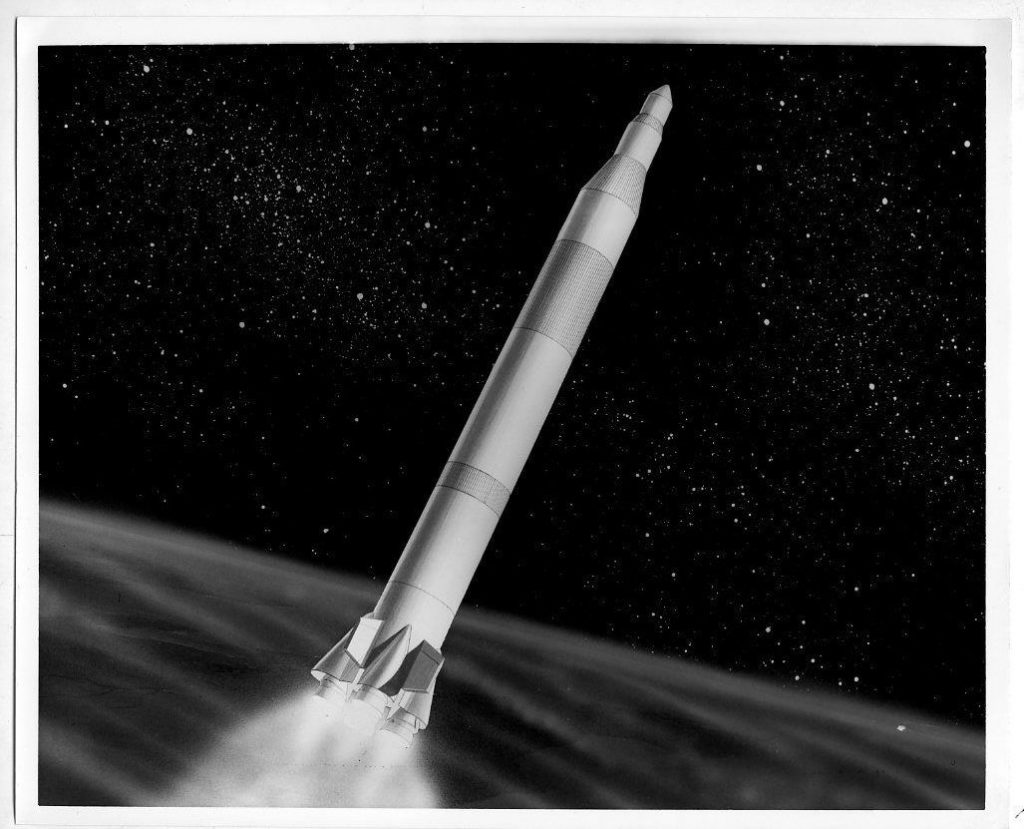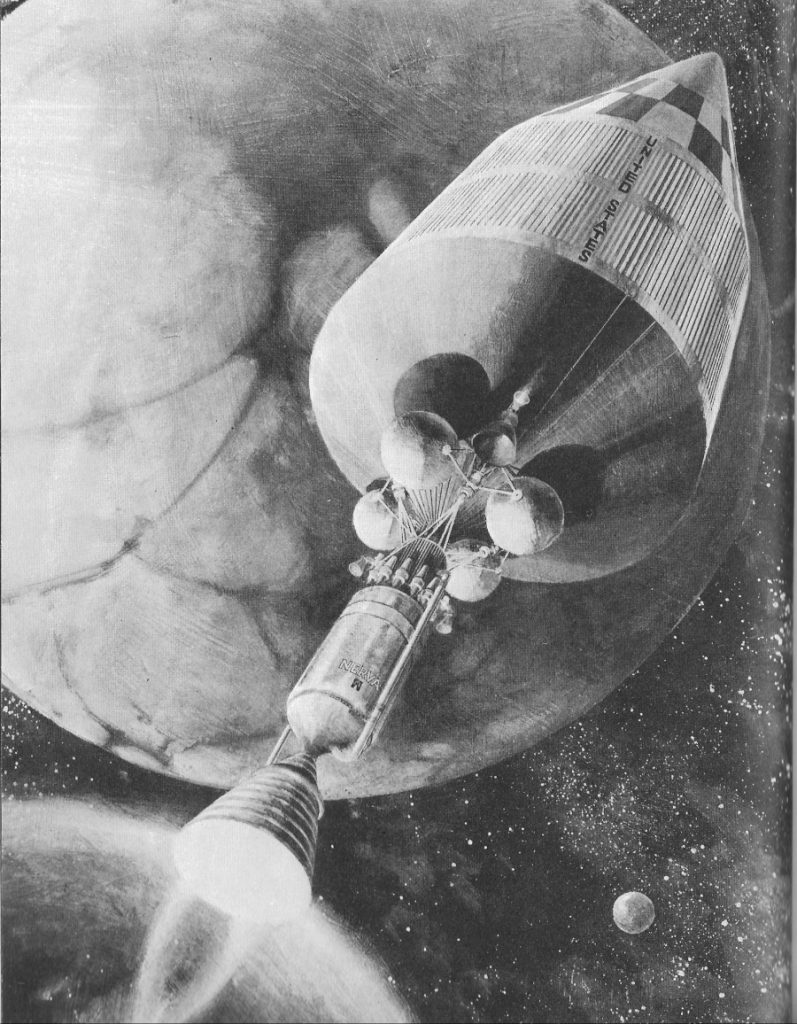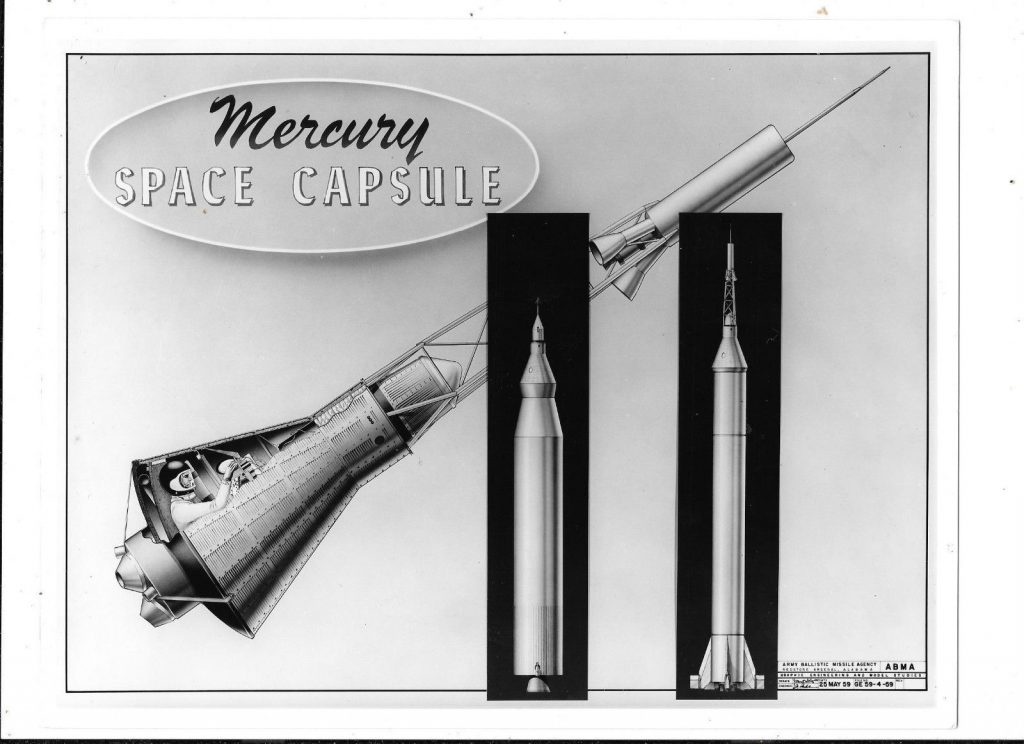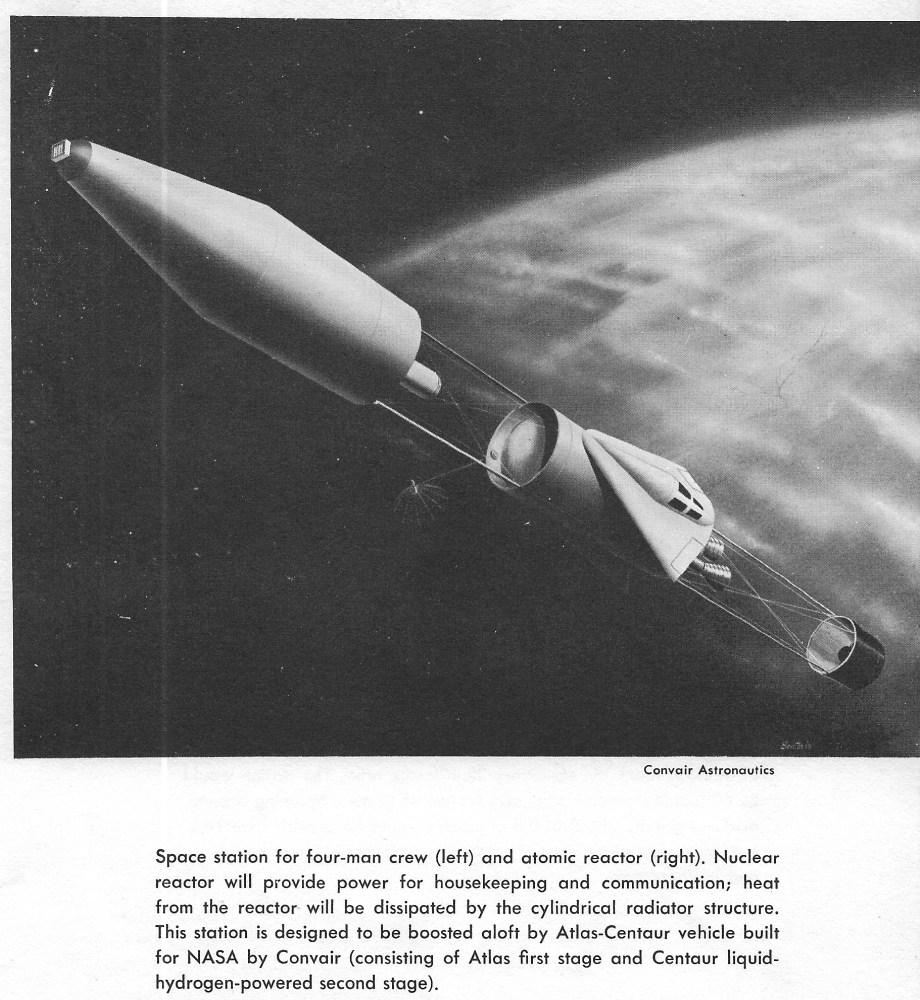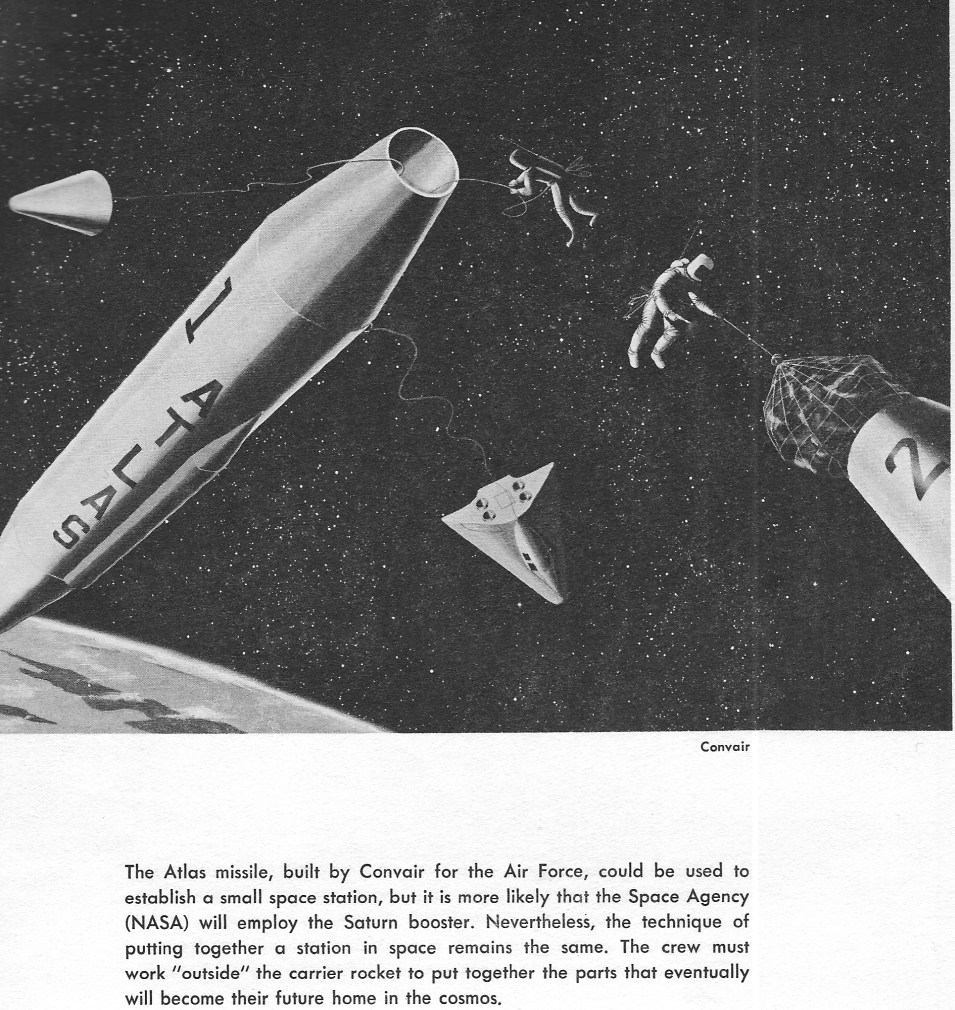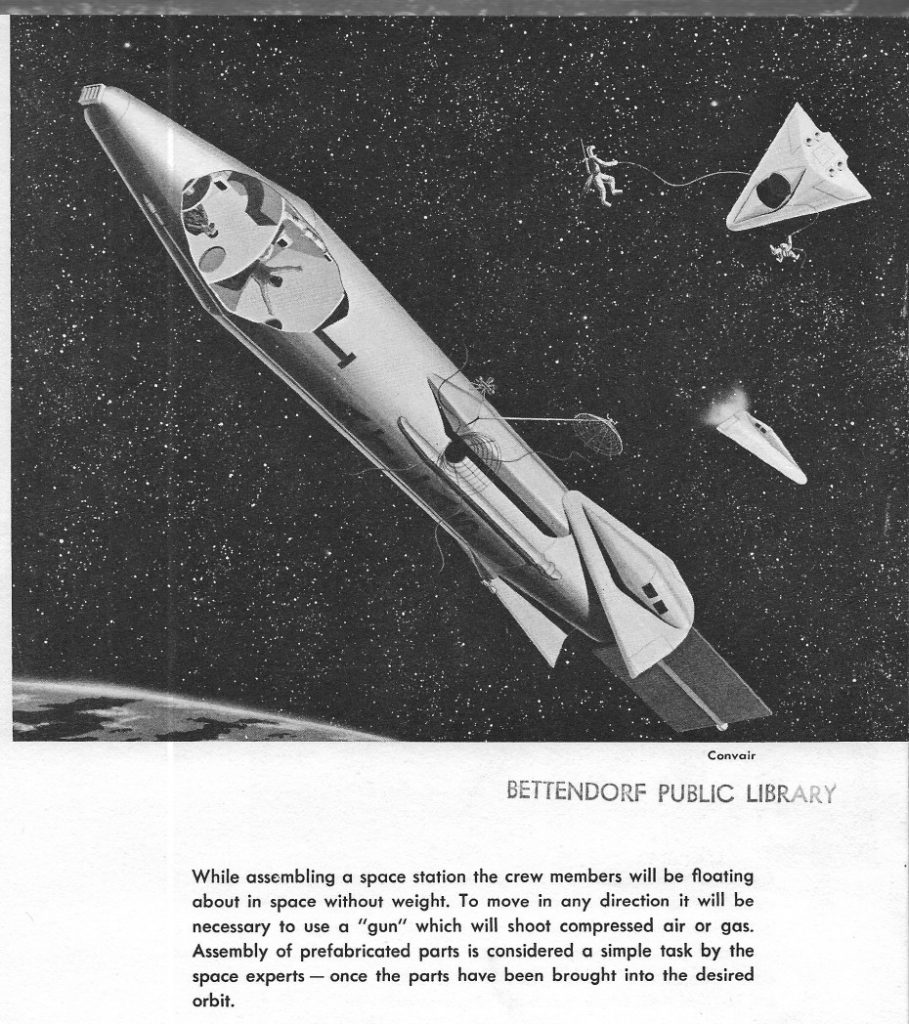A scan of a black and white PR glossy sold on ebay depicting a Boeing concept for a solar power satellite from the 1970’s. Most SPS concept were for Manhattan-sized slabs of aluminum trusswork, holding vast fields of photovoltaic cells. This design, though, was different in that it was a Manhattan-sized collection of vast reflectors concentrating sunlight onto relatively small targets. There a working fluid would be super-heated and the resulting high pressure gas blown through turbogenerators. The gas would be cooled and condensed in the radiators. Note that the artist took some liberties with the orientation: a setup like this would only work if the reflectors were reasonably precisely aligned with the sun. That would only occur when the shadow of the solar collector at the focal point fell onto the center of the concentrating mirror assembly; the radiators would cast almost no shadow, just a razor-thin line bisecting the mirrors.
A piece of 1960’s (published in a book in 1967, but it looks older than that) artwork depicting a five-man nuclear-electric spacecraft. heading to Mars. The spacecraft is long for radiation shielding purposes; at the far distant forward end is the reactor, with the crew and ion engines in the conical section in the tail. Between the ends is a long boom attached to which are the propellant tanks and two large radiators. This is more or less the propulsion system and layout originally planned for the spaceship “Discovery” from the movie “2001: A Space Odyssey,” with the difference that the ion engines were on the other side of the crew module, and the spacecraft “towed” the reactor and radiators, rather than pushing them.
Found on ebay: a piece of B&W art depicting the Saturn V. The provenance is uncertain… unknown where this art originated. There are some unusual details; the tailfins are clocked 45 degrees off, moved from the outer diameter of the engine firings to between them, an odd choice to say the least. The third stage is larger in diameter than the S-IVb with a very long interstage between the S-II and the S-IVb; this *may* indicate that the third stage was meant to be a nuclear stage, with a single NERVA engine attached to the rear of the S-N third stage. The payload is also different: it appears to be a direct lander… no LEM, the Apollo vehicle landed directly on the lunar surface.
A piece of Aerojet artwork depicting the NERVA nuclear rocket engine heading to Mars. This is almost certainly artistic license as the vehicle depicted here is a single stumpy upper stage with an aerodynamic fairing. This is mot likely a RIFT (Reactor In Flight Test) configuration, a simple expendable upper stage test configuration meant to be launched atop a Saturn V to prove out the engine.
Found on ebay a while back, a pre-NASA Army Ballistic Missile Agency illustration dated 25 May 1959 depicting the Mercury space capsule, including smaller views of it atop both a Redstone and a Jupiter. In both cases this would be a purely sub-orbital lob. It’s unclear just what’s going on with the nose of the Jupiter version; it does not have the abort tower the Redstone version has. This may be a purely aerodynamic fairing, with abort motors located underneath the capsule in the sizable adapter section.
…for extracting water from rocks on the moon. This dates from 1963-65 and was part of a North American Aviation study relate to post-Apollo lunar exploration… which at the time was fully expected. The LESA (Lunar exploration Systems for Apollo) program would land habitats on the moon for extended exploration; the later phases of the LESA program were expected to occur in the late 1970.s The conclusion was that solar was preferred for the earliest phases, transitioning to nuclear. Basically, either system would cook rocks till the water came out as a thin vapor, which would be collected.
In the more than fifty years since this came out, the technologies involved haven’t changed a whole lot, especially solar: it remains a mirror and sunlight. Nukes should – hopefully – have improved. So it might still be a bit of a tossup on the moon; of course, any long-term lunar exploration is going to need nukes anyway for the simple reason that two weeks of night is a *real* long time if your base is solar powered. Going further out – asteroids, outer planet moons, comets and such – the math increasingly works in nuclears favor. But then, what’s needed is power, and mirrors in microgravity can be made extremely large.
It’s an interesting report. If not for the technology and techniques described, then for the basic worldview that suggested to engineers more than half a century ago that they’d soon have to crack water out of lunar rocks.
A Study of the Feasibility of Using Nuclear Versus Solar Power in Water Extraction from Rocks.
Direct PDF download link.
Help support the APR Patreon.
Very late 1950’s Convair promo art of their “Outpost” space-base built from an Atlas launch vehicle. This was publicized enthusiastically by the likes of Krafft Ehricke; it preceded the MOL program, and would have resulted in a manned facility somewhat similar in size, thought dissimilar in capability. The MOL was a pre-finished, single-launch space lab, while the “Outpost” as a “wet lab” would have required considerable effort by workers in space suits to finish. To service the Outpost, an Atlas with a Centaur-like upper stage would orbit two wedge-like lifting bodies.
China reveals details for super-heavy-lift Long March 9 and reusable Long March 8 rockets
Long March 8: meant to emulate the Falcon 9 with a vertically-recovered core, but also use vertically-recovered solid rocket boosters (likely via parachute, though art seems to indicate that they too will have landing legs).

Long March 9: intended to be Saturn V class for manned missions to the Moon and beyond.

No indication that the Long March 9 is aiming for reusability, so it seems likely that the Chinese are emulating not the BFR but the SLS. It is too much to hope that China will emulate the spectacular economics of the SLS as well.
